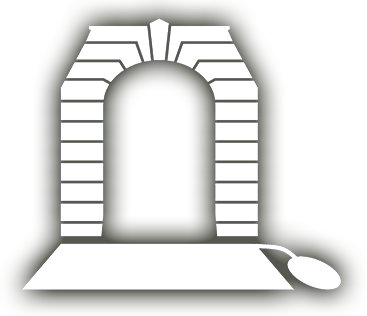TOMKIES, Gordon Watson
| Service Number: | 14654 |
|---|---|
| Enlisted: | Not yet discovered |
| Last Rank: | Not yet discovered |
| Last Unit: | 300th Company Mechanical Transport |
| Born: | Not yet discovered |
| Home Town: | Not yet discovered |
| Schooling: | Not yet discovered |
| Occupation: | Not yet discovered |
| Memorials: |
World War 1 Service
| 4 Aug 1917: | Involvement 14654, 300th Company Mechanical Transport, --- :embarkation_roll: roll_number: '22' embarkation_place: Melbourne embarkation_ship: HMAT Themistocles embarkation_ship_number: A32 public_note: '' | |
|---|---|---|
| 4 Aug 1917: | Embarked 14654, 300th Company Mechanical Transport, HMAT Themistocles, Melbourne |
A lorry driver with the 2nd Siege Battery Artillery Column
Gordon Watson Tomkies was born in Eton, Buckinghamshire in 1888, the son of James Bromwich Tomkies (1849-1897) and Agnes Margaret Fairbrother (1857-1932). In 1914 he married Mary Ann Lanceley (1887-1969). Before enlistment on 6 September 1916, he was employed as a factory manager. He arrived in Australia from England in 1911, where he had served one year in the Territorial Forces. In Sydney, he became a member of the Lane Cove Rifle Club.
Enlisting at the Sydney Showgrounds Camp, he was made Acting Corporal on 18 October 1916 before becoming a Driver with the Mechanical Transport Section on 8 January 1917. On 30 April 1917, he was sent to Broadmeadows in Victoria. He remained in Victoria until embarkation from Melbourne aboard HMAT A32 Themistocles on 4 August 1917. He and four other men comprised the Company 300 Reinforcement of the Australian Army Service Corps. For the voyage only, he was made Sergeant. This ship arrived in Glasglow, Scotland, on 2 October 1917, where he reverted to the rank of Motor Transport Driver. Once in the United Kingdom, he was sent to the Australian Army Service Corps (AASC) Details in Parkhouse.
On 7 February 1918, he proceeded to France, where he was attached for duty with 5th Divisional Supply Column. On 12 March 1918, he was attached for duty with 5th Divisional Motor Transport Company (MTC). The unit comprised nine officers and 398 other ranks taken from the 5th Divisional Ammunition Sub Park and 5th Divisional Supply Column which had been wound up, their vehicles being sent to the new Motor Transport Company. His time with the 5th Divisional MTC was very short, and he was taken on strength with the 2nd Siege Battery Ammunition Column (2nd SBAC) on 29 March 1918. The Column was newly formed. At the same time, the 1st SBAC was formed, and from the account recorded in the war diary, the two commanding officers of both SBACs simply divided the men among themselves. That was how Gordon Tomkies ended up in the unit.
The SBAC was part of the Australian Army Service Corps. Its role was to support 1st Siege Artillery Brigade, which was formerly 36th Heavy Artillery Brigade, reporting to the Heavy Artillery Group under Australian Corps command.
The 2nd SBAC used lorries to transport artillery ammunition, and Holt caterpillar tractors were used to haul the heavy guns. The war diary reports that the men designated as Caterpillar drivers were immediately sent to the Siege Park Tractor Park at La Creche. The service records of Gordon Tomkies do not show him being sent to La Creche, so it is more likely that he was employed as a lorry driver with the unit.
On 5 April 1918, the 2nd Siege Artillery Brigade were ordered to move the guns in expectation of a German attack. The German Spring Offensive had been underway since 21 March. Men of the battery were sent forward to Ploegsteert Wood to see to the guns. However, the German advance and the wounding of two NCOs resulted in the guns being abandoned.
From 12 April until 27 May, the unit was stationed at Sylvestre Cappel, near the French-Belgium border. The time was spent sending men out to fix broken down lorries, including into the forward areas. The Germans pushed the line back to nearby Hazebrouck in March and April.
On 16 June 1918, he was promoted to Lance Corporal.
On 13 October, he spent three days in the 3rd Australian Casualty Clearing Station (3rd ACCS) with a dental issue. When he returned, he found that he had been promoted to Temporary Corporal the previous day. He was made vice to 1705 Corporal Walter Henry Lupton, who had been sent on furlough to Australia. He was made Corporal on 7 January 1919.
On 10 April 1919, Gordon Tomkies was transferred to the 1st Motor Transport Company. Next month, on 20 May 1919, he was sent from France to the UK, where he was temporarily detached from service with the AIF and sent on non-military employment. The reason given was “English methods of farming”. He was to attend West Shepherd, Rossett and Denbighshire. He returned to the AIF on 22 August 1919.
On 22 September 1919, he returned to Australia aboard HMAT A15 Port Sydney. He was discharged from the AIF in Sydney on 20 December 1919.
Post-war, he lived in the suburbs of Sydney. He died suddenly at home on 21 June 1944.
Submitted 25 October 2024 by Tim Barnett







